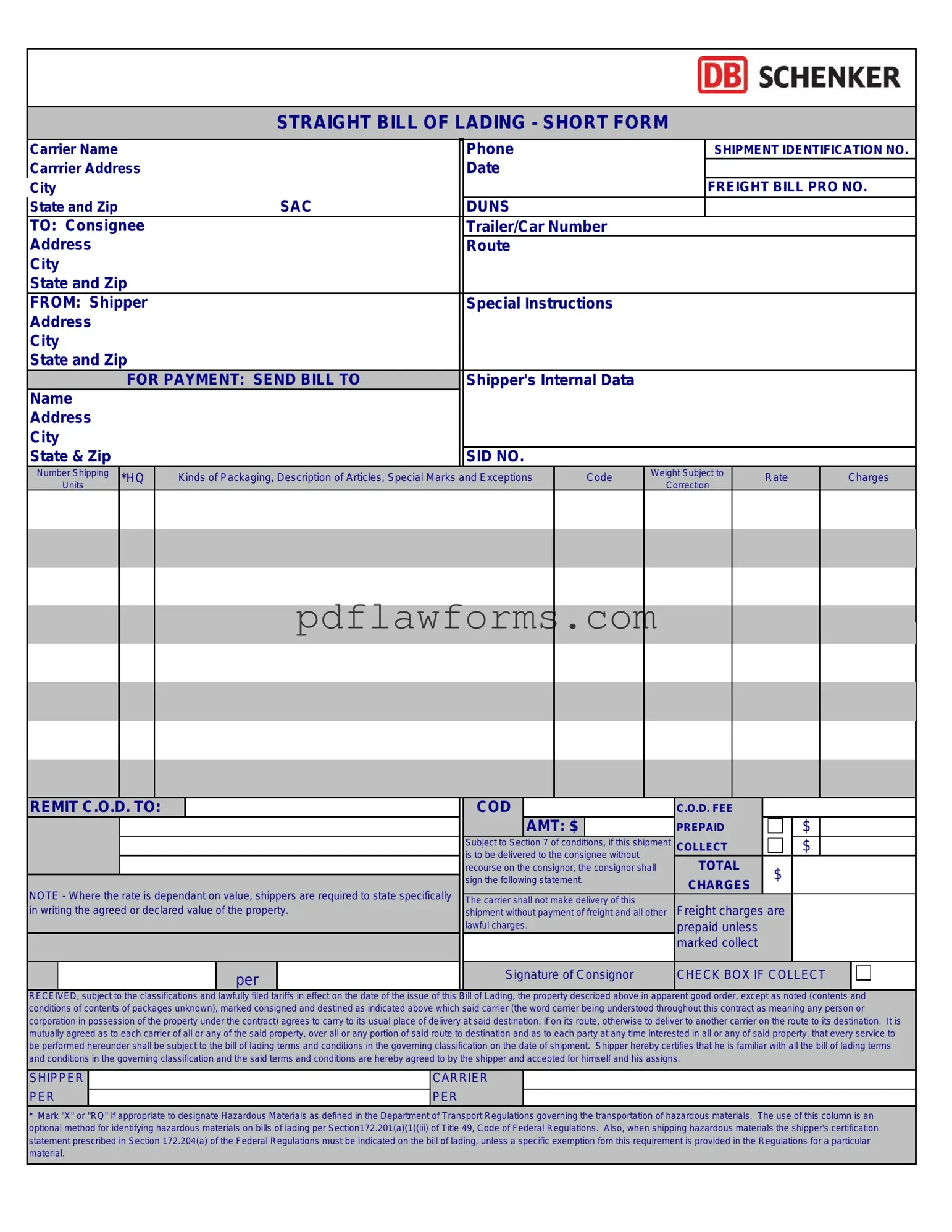Filling out a Straight Bill of Lading form is a crucial step in the shipping process. However, many individuals make common mistakes that can lead to complications. One frequent error is neglecting to include complete addresses for both the shipper and the consignee. Incomplete or incorrect addresses can result in delays, lost shipments, or even additional costs. It is essential to ensure that all address details are accurate and up to date.
Another mistake often encountered is failing to specify the exact contents of the shipment. This includes not only the type of goods being transported but also their quantity and weight. Inadequate descriptions can lead to misunderstandings and disputes between parties involved. Providing a clear and detailed inventory helps prevent such issues and ensures that all parties are on the same page.
Many people also overlook the importance of selecting the right freight charges. Whether the charges are prepaid or collect should be clearly indicated on the form. Misunderstandings about payment responsibilities can lead to disputes later on, so it is critical to make this distinction clear at the outset.
In addition, some individuals forget to sign the Straight Bill of Lading. A signature is essential as it signifies acceptance of the terms and conditions outlined in the document. Without a signature, the bill may be considered invalid, which can complicate the shipping process significantly.
Another common oversight is not keeping copies of the completed Bill of Lading. It is wise to retain a copy for your records, as this document serves as proof of the agreement between the shipper and the carrier. In the event of any disputes or claims, having a copy can be invaluable.
Additionally, many people fail to review the terms and conditions associated with the Bill of Lading. Understanding these terms is vital, as they outline the responsibilities and liabilities of each party. By skipping this step, individuals may unknowingly agree to unfavorable conditions that could affect their rights.
Lastly, some individuals neglect to check for any special instructions or requirements that may apply to their shipment. Certain goods may have specific handling or shipping needs, and failing to note these can lead to damage or loss. Always ensure that any special instructions are clearly stated on the form to avoid potential issues during transit.
